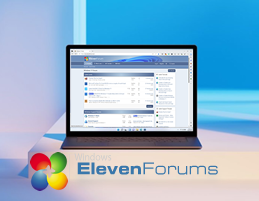- Local time
- 8:20 PM
- Posts
- 59
- OS
- Windows 11 Pro 23H2 Build 22631
Okay, so this may be a stupid question but here goes ...
Given that M$oft hold a digital licence to activate Windows, is there any way to install Windows 11 on a hard disk/SSD of a Windows 10 machine to "try before you buy" and if you upgrade to Win 11, is there any restriction in winding backwards to Windows 10 (apart from the 10/14 day thing?)
What I'm thinking is this.
Clone the HDD/SSD of a Windows 10 machine, do an upgrade to Windows 11 to "try it out", then either (a) carry on with Win 11 on the cloned drive or (b) re-fit the original Windows 10 HDD/SSD. Would this scenario work or would M$oft recognise that that particular machine had been upgraded to 11 and would no longer allow/let Win 10 to work (I'm also thinking of activated Office programs here too).
Alternatively, is it easy enough to partition a HDD/SSD and put Windows 11 in the new partition (is this a virtual disk?) and if yes,how exactly does one go about carrying out that procedure.
My wife's laptop wanted to suddenly upgrade to Windows 11 the other day and I don't think she'll be a fan. Having said that, I have very little knowledge of 11 apart from the fact that generally it isn't a well-liked OS and also that the TPM module essentially means kissing goodbye (possibly in the medium to longer term) to any thoughts of "privacy". A little knowledge is a dangerous thing - no?
Thanks in advance,
Art
Given that M$oft hold a digital licence to activate Windows, is there any way to install Windows 11 on a hard disk/SSD of a Windows 10 machine to "try before you buy" and if you upgrade to Win 11, is there any restriction in winding backwards to Windows 10 (apart from the 10/14 day thing?)
What I'm thinking is this.
Clone the HDD/SSD of a Windows 10 machine, do an upgrade to Windows 11 to "try it out", then either (a) carry on with Win 11 on the cloned drive or (b) re-fit the original Windows 10 HDD/SSD. Would this scenario work or would M$oft recognise that that particular machine had been upgraded to 11 and would no longer allow/let Win 10 to work (I'm also thinking of activated Office programs here too).
Alternatively, is it easy enough to partition a HDD/SSD and put Windows 11 in the new partition (is this a virtual disk?) and if yes,how exactly does one go about carrying out that procedure.
My wife's laptop wanted to suddenly upgrade to Windows 11 the other day and I don't think she'll be a fan. Having said that, I have very little knowledge of 11 apart from the fact that generally it isn't a well-liked OS and also that the TPM module essentially means kissing goodbye (possibly in the medium to longer term) to any thoughts of "privacy". A little knowledge is a dangerous thing - no?
Thanks in advance,
Art
My Computer
System One
-
- OS
- Windows 11 Pro 23H2 Build 22631
- Computer type
- Laptop
- Manufacturer/Model
- Lenovo ThinkPad T495s
- CPU
- AMD Ryzen 7Pro 3700U
- Memory
- 16Gb
- Graphics Card(s)
- Radion Vega 10 Mobile 2Gb
- Screen Resolution
- 1920 x 1080
- Hard Drives
- SK Hynix 2280 m.2 SSD, 512Gb or Crucial T500 m.2 SSD, 1Tb
- Internet Speed
- 380 Mbps Fibre















